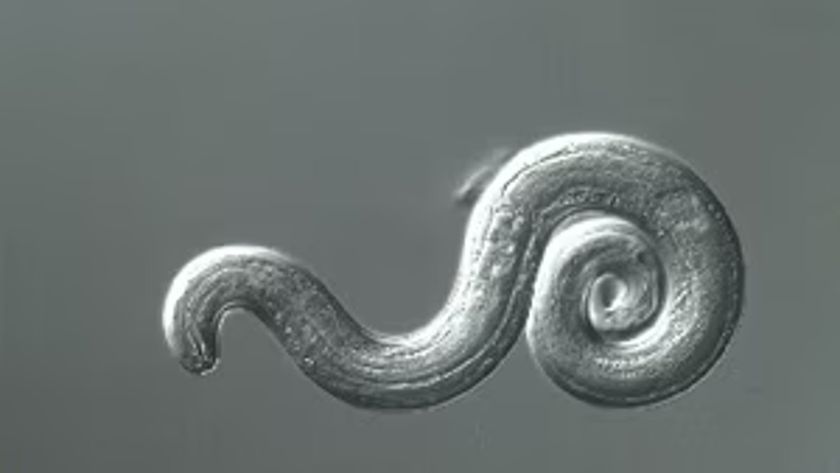Odd Tune: Trumpeter's Neck Swells Like a Bullfrog

A trumpet player learned he had a rare medical condition that revealed itself only while he was playing the brass, according to a new report of the man's case.
Whenever the 20-year-old played his trumpet, his neck swelled up like that of a bullfrog. But it didn’t hurt; he actually hadn't noticed the swelling until classmates at his school pointed it out to him when he was a teenager, he said, according to the report published March 20 in the journal BMJ Case Reports.
"When I got older, it felt uncomfortable every so often, such as when the airflow feels more constricted, which can happen if I'm not warmed up or am out of practice," the man told his doctors, according to the report. [7 Weirdest Medical Conditions]
The patient had seen numerous doctors, but none could find anything wrong with him, even after they ran a CT scan of his neck, said the report's lead author, Rachel Edmiston, an EMT trainee at Central Manchester University Hospital in the United Kingdom.
Edmiston and her colleagues requested that the man play his trumpet during a CT scan. That scan revealed an area in his throat with abnormal dilation, and the team diagnosed the man with a pharyngocele. The condition is caused by a weak spot in the pharynx, which is passageway that connects the back of the mouth and nose to the esophagus and voice box.
A pharyngocele happens when weak muscles cause part of the pharynx wall to bulge out like a bubble; often it happens when the passageway is under pressure for a prolonged amount of time, such as from playing a wind instrument, blowing glass or coughing excessively, Edmiston said.
People can be born with pharyngoceles, or develop them later in life. Those who have pharyngoceles may cough at night, regurgitate their food, feel pain or have trouble swallowing, according to the study.
Sign up for the Live Science daily newsletter now
Get the world’s most fascinating discoveries delivered straight to your inbox.
Another rare condition, a laryngocele, is similar, but forms in the larynx (commonly called the voice box), Edmiston noted. It happens when a small pocket of tissue in the larynx dilates and fills with air when it is under prolonged pressure. Symptoms of this condition include neck swelling, a hoarse voice and difficulty breathing, according to the study. Some people with the condition may decide to have surgery, so doctors can remove the pocket.
In the trumpeter's case, the doctors advised the man to wear a scarf around his neck when he played the trumpet, "to stop it from being able to expand," Edmiston told Live Science. They also asked him to maintain good oral hygiene and healthy eating habits, so that he could avoid bacterial overgrowth in the affected, bubblelike area.
But the patient found the scarf uncomfortable, Edmiston said. Instead, "by changing his technique of playing the trumpet, he's been able to reduce the effects of [the pharyngocele]" Edmiston said.
People who teach wind and brass players may want to take note, said Dr. Len Horovitz, an internist at Lenox Hill Hospital in New York City, who was not involved in the man's case.
"Teachers look at their students, and they would probably pick up on that [swollen neck] before the student does," Horovitz said.
Follow Laura Geggel on Twitter @LauraGeggel. Follow Live Science @livescience, Facebook & Google+. Original article on Live Science.

Laura is the archaeology and Life's Little Mysteries editor at Live Science. She also reports on general science, including paleontology. Her work has appeared in The New York Times, Scholastic, Popular Science and Spectrum, a site on autism research. She has won multiple awards from the Society of Professional Journalists and the Washington Newspaper Publishers Association for her reporting at a weekly newspaper near Seattle. Laura holds a bachelor's degree in English literature and psychology from Washington University in St. Louis and a master's degree in science writing from NYU.
Most Popular




